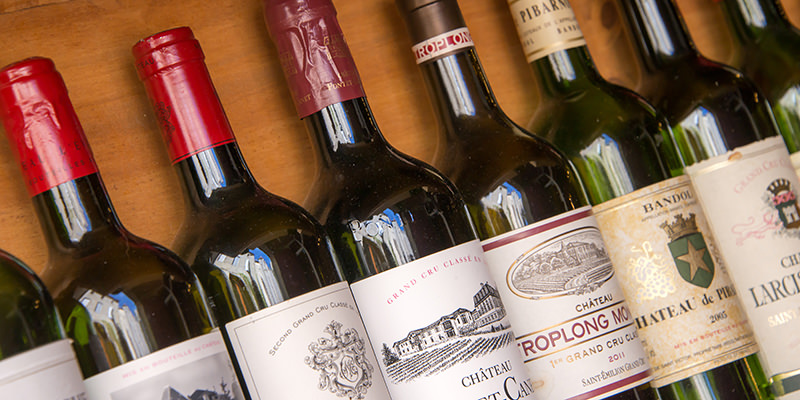What seems important on a wine label can vary drastically, depending on where the wine is from, if it’s a varietal, whether the winemaker is going for aesthetic or information—or just straight up girl power shock value.
Good news for you: there’s really only a handful of essential things you need to know on any wine label. Yes, getting into Old World wines, terminology can get a bit more complex, with Chateaux and Cru levels printed alongside etchings of old castles. But if you pay attention to these elements on any wine label, you should have a decent sense of what you’re in for, besides just intoxication.
Wine Maker or Winery:
Usually the easiest to spot, but not necessarily the most important at first—unless you’re seeking out a particular wine maker. Good to know, though, especially if you want to remember who made the delicious/terrible wine you just bought. Hard to miss on a New World Label; on an Old World label, there may be a bit of decoding.
Appellation:
The long and the short of it—where the wine was made. It could be as big as a state, e.g. California Chardonnay, or as specific as an actual vineyard in a particular region in a particular country. In Old World labels you’ll see terms like “Appellation Controlee” (AOC) and “Denominazione della Origine Controllata” (DOC), denoting that these are legally regulated areas of wine production. Don’t let the terms scare you. It’s still just all about that place.
Varietal Name:
If the wine is a varietal (as in one-grape) wine, the name of that grape should be pretty prominent on the label—but only if it’s a New World wine. Think of a California Cabernet Sauvignon or a New Zealand Sauvignon Blanc. (It’s not required to list the varietal, but many producers—wisely—choose to do so.) Bear in mind that in the U.S., only 75% of the wine’s actual content has to come from the varietal listed. (Don’t worry, the rest comes from other blending grapes, not, like, Welch’s.)
If the wine is a blend, especially an Old World blend, you may or may not see what went into it, but your best bet is to check the back label. That’s where they’d print the blend if the winemaker chose to make it known, though they don’t have to.
Vintage:
If there’s a date listed on the wine label, that means it’s a vintage wine—meaning all the grapes were picked in that year. Vintage is easy to spot, since it’s one of the most readily recognizable things on any wine label, no matter how complex. Important if you hear that 2005 was a good vintage for French Burgundy (and you have plenty of cash on hand).
Alcohol Percentage:
Always good to know the percent of alcohol by volume, or ABV, of the wine you’re buying. You might find it somewhere on the front label, but (especially with Old World wines) you can also find it on the back label, often next to the bottle size, which, unless you’re going magnum, should be 750ml. Unlike beer, wines must have the ABV printed on the label.
Sweetness Level:
This matters when you’re buying wines that can have residual sugar content and/or sweet iterations, like Riesling and Champagne. In Champagne, the scale goes from Extra Brut (driest) to Brut, Extra-Dry, Sec, Demi-Sec, and Doux. Point of confusion: “demi-sec” means “half-dry,” but it can actually taste moderately sweet.
Another place it’s good to know sweetness terms: Riesling. New World Rieslings keep it pretty simple with terms like Dry (meaning the least sweet), Semi-Dry, Semi-Sweet, and Sweet. But once you get into German and Austrian Riesling, you’ll find a multi-syllabic step-ladder from least to most sweet: Kabinett, Spatelese, Auslese, Beerenauslese, Trockenbeerenauslese, and Eiswein. A good shortcut for dry Riesling, look for “Trocken” on the label. Another shortcut: Austrian Rieslings tend to be dryer than their German cousins.

